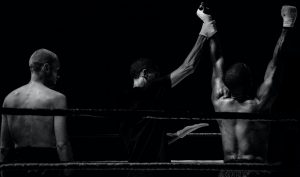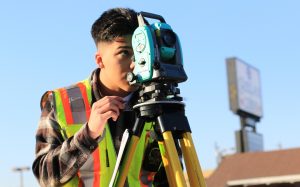16 Personality Test: Free Online Alternative MBTI Assessment
People are switching from the 16 personality test to HIGH5 test. Here’s why…
Strengths Oriented
Specifically highlight strengths, not weaknesses or themes.
Focused on Action
Gives you the tools you need to apply strengths to the real world.
Reporting for Teams
Analyzes strengths throughout teams and organizations.
Increase Teamwork
Designed to give clear insights to boost interpersonal skills.
Easy to Understand
Anyone can understand and learn from their results.
Scale to Large Teams
Spread positivity and motivation throughout your entire team.
Supported by Research
Based on decades of detailed strengths-based research.
Start Immediately
No waiting around for feedback. Only simple, actionable results.
Progress Tracking
See your personal growth over time.
Full Strengths Overview
Get an outside view of your abilities.
Strengths Academy
Take advantage of hundreds of informative and engaging strengths videos.
Affordable
You can begin for free, and upgrade whenever you feel like.
What is the 16 Personality Test?
The Myers-Briggs Type Indicator Test (MBTI) is one of the most used psychological tools aimed for a wide range of purposes. It is a self-report inventory, i.e., a specific type of psychological test designed to reveal somebody’s personality type. The MBTI is based on Carl Jung’s theory on psychological types.
His theory was later extensively studied and extended by Katharine Briggs and her daughter Isabel Myers. The basics of the MBTU lie in the belief that some seemingly random personality traits can be analyzed and grouped into specific cognitive functions that determine a person’s type.
Both women created the Myers-Briggs Type Indicator that categorizes people into 16 different personality types. The categories are based on four dichotomies that focus on four cognitive functions that deliver the personality type when combined in a specific cluster.
The dichotomies go as following: Introversion-Extroversion, Sensing-Intuition, Thinking-Feeling, and Judging-Perceiving.
The names of the 16 personalities, i.e., their acronyms, are delivered based on the specific combination of these functions, such as INTJ(Introverted, Intuitive, Thinking, Judging), or ESTJ (Extroverted, Sensing, Thinking, Judging).
Combining these functions delivers somebody’s personality type, i.e., they point to a person’s interaction with the outer or inner world, his/her preferences, strengths and weaknesses, and how people make decisions.
The primary and auxiliary functions significantly define the personality type. The tertiary function provides the personality’s nuances, while the inferior function is subconscious or/and points to a person’s weaknesses.
Why Take the Free MBTI Assessment (Myers-Briggs Type Indicator)?
One of the greatest perks of the MBTI test is its non-judgemental nature. It has been designed in a way that reveals a person’s strengths and weaknesses without preferring one personality type over another or declaring one type being superior to another. The purpose of the test is to understand and cherish personality differences.
When a person knows their personality type, it can provide an insight into their personality on a much deeper level.
It can help individuals understand why they behave the way they do without creating a feeling of incompetence or judgment.
It can explain the contrasting nature of family members, it can help people build meaningful relationships, boost their strengths and work on their weaknesses.
The popularity of the MBTI is immense, and the fact that 88 out of 100 Forbs companies implement it is more than indicative.
It has provided significant help to employers to match potential employees to a job that is most suited for their personality type, and therefore mutually benefit from it.
It can also help other people compare the compatibility with other people and detect the possible reasons for misunderstanding. It can help tackle relationship issues and point to possible solutions.
How Does the Personality Test Work?
The test is divided into two sections and a total of 60 questions. The first section offers questions that describe personalities on two opposite ends with five possible alternatives to choose from.
The second section includes statements (e.g., I love spending time alone), and participants have to rate the level of applicability to their personality. Once the answers are corrected, the person who did the test gets the result on his/her email account.
The MBTI is not a psychological diagnosis, and its purpose is to help people or organizations have an in-depth insight into their employees/ personal potentials.
If someone was asked to do the test solely for employment purposes, then the organization or the institution will offer the person the position that matches his/her personality type.
What Will I Find Out Upon Completion Of The 16 Personality Assessment?
Once you complete the assessment, you will get information about your personality type, including your Identity features.
Identity is an additional feature or a subtype within your type that goes deeper into understanding your interaction with the people around you. It tackles the concepts of self-confidence, anger management, and compassion.
There are two types of Identities: Assertive and Turbulent, so, together with your personality type, you’ll know whether you are Assertive or Turbulent.
Once you know your type, you can find out what inspires and motivates you, how you interact with others, your strengths and weaknesses and how to create meaningful relationships.
You can find out what makes you unique and how you can utilize your potentials to advance in your professional career.
Can a MBTI Personality Type Change Over Time?
The primary personality type can’t change, and no one can have two personality types. It is believed that individuals are born with innate cognitive functions that determine preferences and perception.
However, at specific points in your life, some aspects of your personality can get modified, particularly if the environment or circumstances around the individual impose using learned but not natural skills.
Take, for example, someone who is a natural introvert and gets energized by spending time alone. If this person gets a job that requires extensive communication with other people, this individual might try to blend in and develop communication skills.
However, if he/she switches to another job position that fits the introvert’s profile, the person will get back to his/her normal self.
There have been individuals that receive different MBTI personality types in different periods of time. Since MBTI is a tool that delivers results based on a person’s answers, it might happen that those people were differently influenced when they did the assessment.
Even in such cases, there’s usually one function that gets slightly changed or borderline with another function.
How Accurate is the 16 Personality Types Test?
The Myers-Briggs company claims that the MBTI test is very accurate provided the test takers give honest answers to the questions.
Actually, the website boasts it is one of the most accurate and reliable personality tests currently available as it has a 90% accuracy rating.
Within the last 40 years, the test has been continuously updated, there have been hundreds of studies that have proven its reliability and validity. It efficiently measures preferences. However, it is not a tool that measures ability, character, or trait. Here is a list of the best personality tests online.
Disclaimer: HIGH5 does not intend to replicate or to substitute MBTI Myers Briggs test as both tests follow different methodologies, yet bring value in similar ways. Both tests help test takers be more aware of their own personality. HIGH5 does not dispute or diminish the value of MBTI Myers Briggs test and encourages test takers to go through both assessments. If you have any questions, please do not hesitate to reach us at hello(at)high5test.com
Myers-Briggs, MBTI, the MBTI logo are trademarks of their respective owners. All other trademarks not owned by HIGH5 Test that appear on this Web site are the property of their respective owners, who may or may not be affiliated with HIGH5 Test.
INFJ (ADVOCATE)
INTP (LOGICIAN)
INFP (MEDIATOR)
INTJ (ARCHITECT)
ISFP (ADVENTURER)
ISFJ (DEFENDER)
ENTJ (COMMANDER)
ESTJ (EXECUTIVE)
ENFJ (PROTAGONIST)
ENFP (CAMPAIGNER)
ENTP (DEBATER)
ESFJ (CONSUL)
ESFP (ENTERTAINER)
ESTP (ENTREPRENEUR)
ISTJ (LOGISTICIAN)
ISTP (VIRTUOSO)










































































